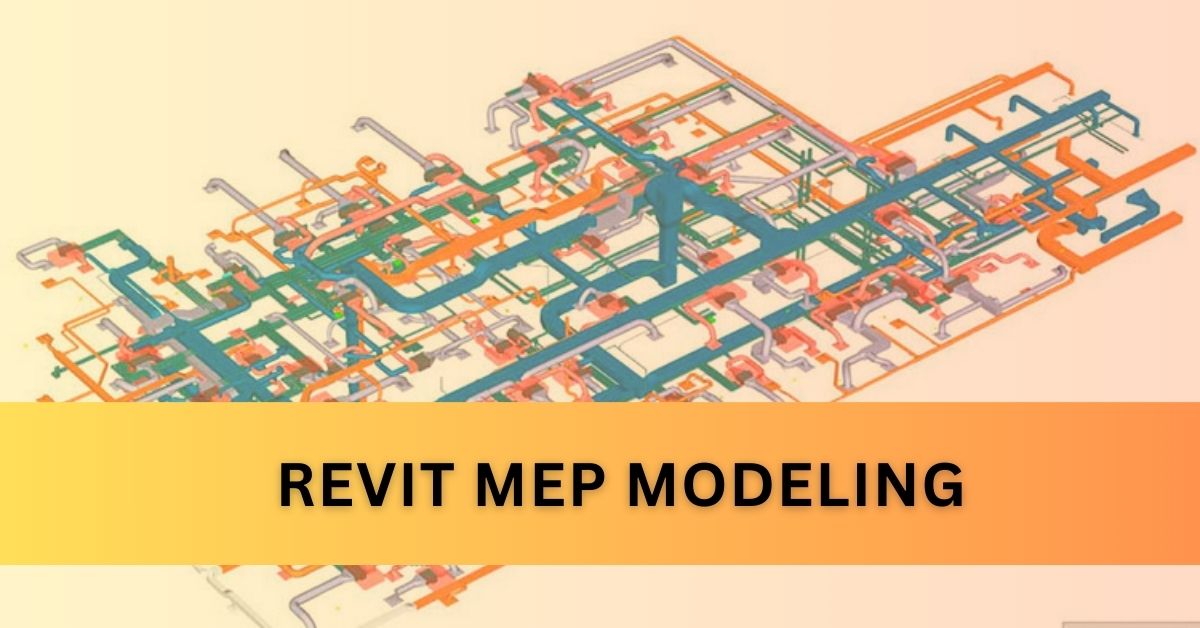Efficiency is the key to success in the ever-evolving landscape of MEP (Mechanical, Electrical, and Plumbing) projects.
Projects in this domain demand precision, collaboration, and effective management of time and resources.
This is where BIM (Building Information Modeling) integrated with Revit MEP Modeling steps in, offering many benefits that can maximize efficiency and transform how we approach MEP projects.
Benefits of BIM Integrated Revit MEP Modeling
1. Improved Accuracy and Precision
One of the foremost advantages of using BIM integrated with Revit MEP modeling is its unparalleled accuracy and precision.
BIM provides a comprehensive and detailed representation of the project, minimizing the chances of errors and discrepancies.
The 3D modeling aspect of Revit MEP ensures that every component and detail is accounted for, resulting in precise project outcomes. This precision not only saves time but also prevents costly rework.
2. Streamlined Collaboration
Efficient MEP projects hinge on collaboration between multiple stakeholders, including Architects, Engineers, Contractors, and clients. BIM is a common platform where all project contributors can work together seamlessly.
With shared access to project data, real-time updates, and the ability to address issues promptly, collaboration is taken to a whole new level.
This level of synchronization ensures that everyone is on the same page, ultimately leading to a more efficient project delivery.
3. Time and Cost Savings
Time is money, and this adage couldn’t be more accurate in the world of MEP projects. BIM integrated with Revit MEP modeling significantly reduces project timeframes.
With streamlined workflows, efficient data management, and real-time project tracking, projects are completed faster, saving time and money.
Additionally, cost savings are achieved through reduced errors, fewer change orders, and optimized resource allocation.
4. Enhanced Project Visualization
Visualization is a powerful tool in project management. BIM’s 3D modeling capabilities clearly and intuitively represent the project.
This aids in better understanding and communication, both internally and with clients. When everyone can visualize the project, misunderstandings are minimized, and decisions are made more confidently.
Also Read, Process of Revit 3D Modeling for MEP Engineers
Maximizing Efficiency in BIM Integrated Revit MEP Modeling
1. Utilizing Parametric Design
Parametric design is a critical element in BIM integrated with Revit MEP modeling. It allows for the creation of intelligent, data-driven design elements.
When changes are made, parametric design ensures that all related components are automatically adjusted. This streamlines the design process and minimizes errors, ultimately enhancing project efficiency.
2. Leveraging Automated Systems
Automation is at the heart of efficiency. BIM integrated with Revit MEP modeling empowers professionals to automate various processes, from quantity take-offs to clash detection.
Automated systems reduce the need for manual intervention, speeding up project delivery and minimizing human error.
3. Effective Data Management
Efficient data management is a cornerstone of successful BIM projects. With abundant data generated throughout the project’s lifecycle, it’s crucial to have robust data management systems in place.
BIM integrated with Revit MEP modeling offers the tools and techniques necessary to handle data efficiently, ensuring the correct information is accessible when needed.
4. Implementing Clash Detection
Clash detection is a crucial aspect of MEP projects. It involves identifying and resolving conflicts between different building components.
BIM integrated with Revit MEP modeling has built-in clash detection capabilities, helping teams spot and address clashes early in the project. By preventing errors and rework, this feature significantly boosts efficiency.
5. Continuous Training and Skill Development
Efficiency can only be maximized if the professionals working with BIM and Revit MEP modeling have the right skills and knowledge.
Continuous training and skill development are essential. Staying up-to-date with the latest industry trends and software updates ensures that the full potential of these tools is harnessed.
Also Read, BIM For MEP: 4 Reasons It’s Critical For Design And Coordination
Real-World Case Studies
Let’s look at real-world examples to illustrate how organizations benefit from BIM integrated with Revit MEP modeling.
Case Study 1:
A leading construction firm, A incorporated MEP BIM services into their commercial MEP projects in USA. The company achieved 6D BIM, which included populating as-built information to the design models.
Mentioned below are the benefits that the company experienced on projects:
- Using BIM, company A could control and manage the site, stakeholders, and design more effectively.
- Company A developed a precise bill of quantities (BOQ), using which they had better control over the project’s overall costs.
- Through BIM, they could control cost and time overruns, reduce project completion time by 20%, and experience a 15% decrease in project costs.
Conclusion
Maximizing efficiency with BIM-integrated Revit MEP modeling is not just a trend; it’s a necessity for MEP professionals.
The benefits, from improved accuracy to streamlined collaboration, time and cost savings, and enhanced project visualization, are too significant to ignore.
By harnessing parametric design, leveraging automation, managing data effectively, implementing clash detection, and focusing on continuous training, MEP professionals can unlock the true potential of these tools.
Efficiency is the key to staying competitive in the MEP industry, and BIM integrated with MEP BIM services is the path to achieving it.
Frequently Asked Questions – FAQs
Is BIM integrated with Revit MEP modeling suitable for all MEP projects?
BIM integration can benefit many MEP projects, but its suitability depends on project complexity and client requirements. It’s essential to evaluate on a case-by-case basis.
How do MEP BIM services help in collaboration between project stakeholders?
MEP BIM services provide a platform for stakeholders to access and update project data in real-time. This fosters collaboration by ensuring that everyone is on the same page.
Can you provide some examples of automated systems in Revit MEP modeling?
Automated systems in Revit MEP modeling include automatic quantity take-offs, clash detection, and parametric design features.
How do I get started with BIM and MEP BIM modeling training?
You can find various online courses and training programs. Start with introductory courses and gradually move to more advanced topics for MEP BIM modeling.
What are some common challenges when implementing BIM integrated with Revit MEP modeling?
Challenges may include initial software setup, data management, and the need for professionals to adapt to new workflows. Proper planning and training can address these challenges effectively.
Also Read, Significance of Structural Modeling in Project Management







